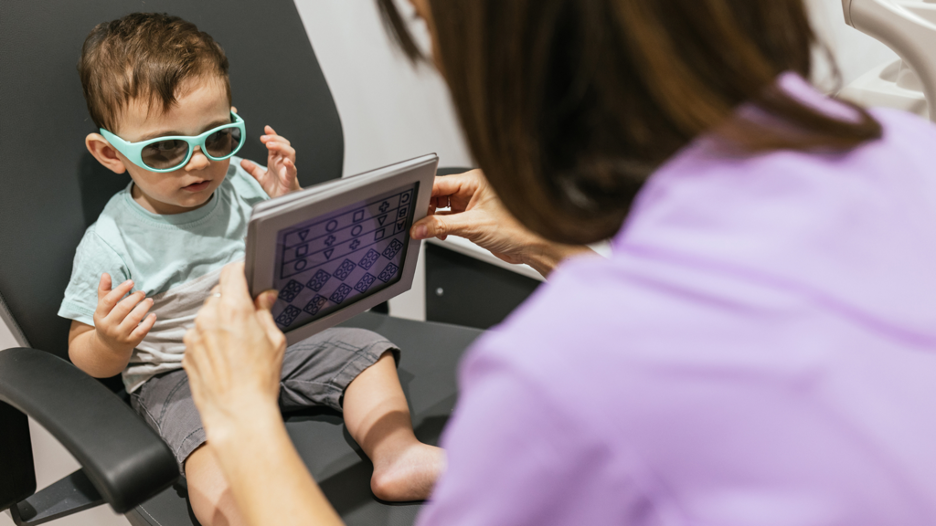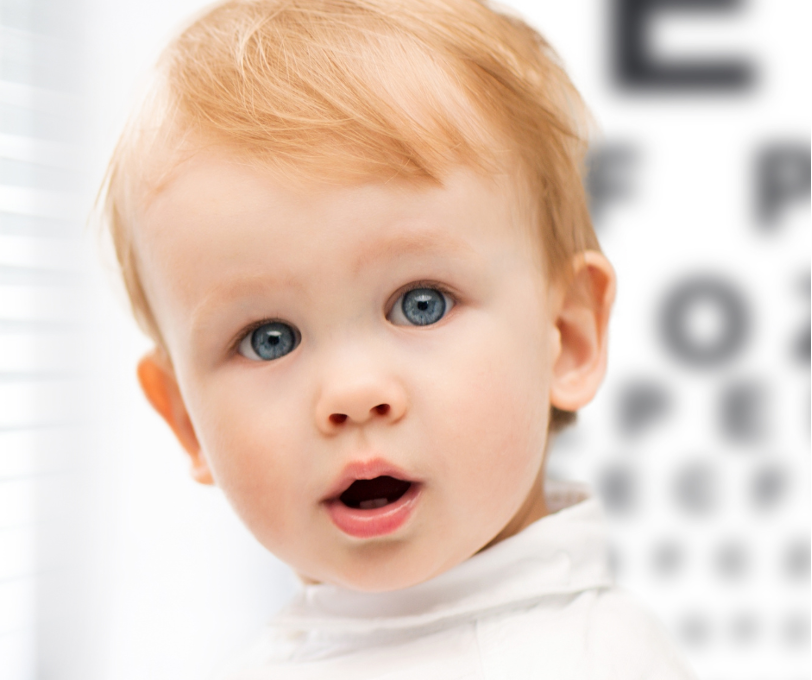As a new parent, your baby’s health is always top of mind. You watch every little movement and milestone closely, hoping they’re developing normally. But when it comes to their eyesight, things get tricky. Unlike adults or older kids, babies and toddlers can’t tell you when something’s wrong with their vision. This makes it tough to know if their eyes are healthy or if they’re struggling with an unseen issue.
If you’ve ever wondered how to tell if a baby has vision problems or worried about the signs of vision problems in toddlers, you’re not alone. Many parents feel overwhelmed by conflicting advice and uncertain about what’s normal in infant vision development.
In this post, we’ll help you spot common eye problems in babies and toddlers early, before they can speak up, and explain when it’s time to schedule a pediatric eye exam. By the end, you’ll feel more confident in protecting your child’s eye health and know exactly what to watch for.
Why Early Detection Matters for Infant and Toddler Vision
Babies’ eyes develop rapidly during the first few years of life. Clear, healthy vision is essential for learning, exploring, and social development. Problems left unnoticed can affect how their brains process visual information, potentially leading to lasting issues like lazy eye (amblyopia) or poor depth perception.
Because kids can’t describe blurry vision or eye discomfort, early signs can be subtle. Catching eye problems early means more effective treatment and better outcomes. That’s why knowing when to check a baby’s eyesight and recognizing early clues is so important.
What Normal Infant Vision Development Looks Like
Understanding what’s typical can help you spot when something’s off. Here are some milestones to keep in mind:
- Birth to 2 months: Babies can see shapes and light, but their vision is blurry. They start to focus on faces and follow moving objects briefly.
- 3 to 6 months: Eye coordination improves. Babies begin tracking objects smoothly and start reaching for things they see.
- 6 to 12 months: Depth perception develops, and they begin to recognize familiar faces and objects.
- 12 to 24 months: Toddlers start to identify colours and shapes more clearly, improve hand-eye coordination, and may start showing preferences for using one eye more than the other.
If your child isn’t reaching these visual milestones, it could be a sign of a problem.
Common Signs of Vision Problems in Babies and Toddlers
Even without words, children can show you their eyes need attention. Watch for these signs of vision problems in toddlers and babies:
1. Baby Not Making Eye Contact
If your infant rarely makes eye contact, especially after the first few months, this can signal issues with focus or eye coordination. While some babies may be shy, consistent avoidance of eye contact is worth mentioning to your optometrist.
2. Persistent Squinting or Baby Squinting Eyes
Squinting is the body’s way of trying to focus better, so if your baby or toddler squints often, it might indicate blurry vision or eye misalignment.
3. Excessive Tearing or Eye Rubbing
Tearing up more than usual or rubbing eyes frequently can mean discomfort from eye strain, dryness, or irritation caused by vision problems.
4. Crossed or Wandering Eyes
One eye drifting inward or outward (strabismus) or not moving together with the other eye is a common early sign of vision trouble. This needs quick evaluation since it can affect visual development.
5. Tilting or Turning the Head to See
If your toddler tilts their head or turns it to one side to look at things, this may be compensating for poor vision in one eye.
6. Sensitivity to Light
Extreme fussiness or crying when exposed to bright lights could mean your child’s eyes are overly sensitive or uncomfortable.
7. Delayed Visual Responses
If your baby doesn’t respond to visual stimuli, like tracking moving toys or recognizing familiar faces by 3 to 6 months, it’s a red flag.
8. Difficulty Following Objects
Lack of smooth eye tracking or difficulty following moving objects for six months might suggest coordination problems.
9. Eye Discharge or Redness
While not always vision-related, frequent redness or discharge can sometimes accompany infections that affect vision and should be checked.
When to Schedule Your Child’s First Pediatric Eye Exam

Early eye exams are critical. According to eye care experts and organizations, the ideal age for the first eye exam is around 6 months. This helps catch congenital issues like cataracts or misaligned eyes.
After the initial exam, toddlers should have their vision checked again around age 3 and before starting school to make sure their vision is ready for learning demands. Of course, if you notice any worrying signs, don’t wait—schedule a visit sooner.
At LMC Optometry & Eye Care, our pediatric eye exams are gentle and designed specifically for little ones. We look beyond just vision clarity and check eye health, eye movement, focus ability, and how well the eyes work together.
What Happens During a Pediatric Eye Exam?
A pediatric eye exam might sound intimidating, but it’s usually quick and painless. Your child’s optometrist will:
- Use toys, lights, and pictures to engage your child while testing vision.
- Check eye alignment and movement.
- Assess focusing ability and tracking skills.
- Look inside the eyes to screen for health issues.
- Recommend treatment or glasses if needed.
These exams are tailored for different age groups and make the experience as comfortable as possible.
How LMC Optometry & Eye Care Supports Your Child’s Vision Journey
We understand how stressful it can be when you’re worried about your child’s health but don’t know what to do. At LMC Optometry & Eye Care, we want to be your trusted partner in your child’s eye care. We’re here to answer your questions, provide expert guidance, and help ensure your little one’s vision is developing the way it should.
Whether your toddler needs an eye exam, a diagnosis, or treatment like glasses or vision therapy, our team will work with you to make the process smooth and reassuring.
What Parents Can Do at Home to Support Healthy Vision
While professional eye care is key, there are everyday things parents can do to support their child’s eye health:
- Encourage outdoor play to strengthen focus and eye muscles.
- Limit screen time appropriate to their age.
- Make sure their play area is well lit to prevent eye strain.
- Maintain regular check-ups with your family doctor and optometrist.
- Watch for any unusual eye behaviours or delays in milestones.
Final Thoughts: Trust Your Instincts and Act Early
You know your child best. If you ever feel something isn’t quite right with their eyes or vision, trust your instincts. Early action can make a huge difference in preventing lifelong vision problems. Don’t wait for your toddler to speak up—keep an eye on their behaviour and schedule a comprehensive pediatric eye exam when you’re concerned.
At LMC Optometry & Eye Care, we’re proud to provide caring, thorough eye care for families across Ontario, including Thornhill, Barrie, and Brampton. Your child’s vision is our priority. Reach out to us today to book an appointment or ask any questions about your child’s eye health.



